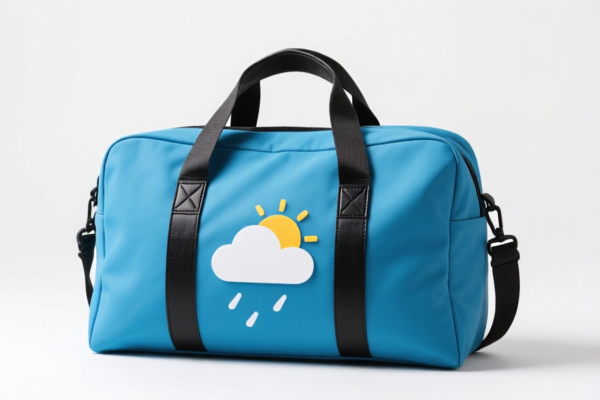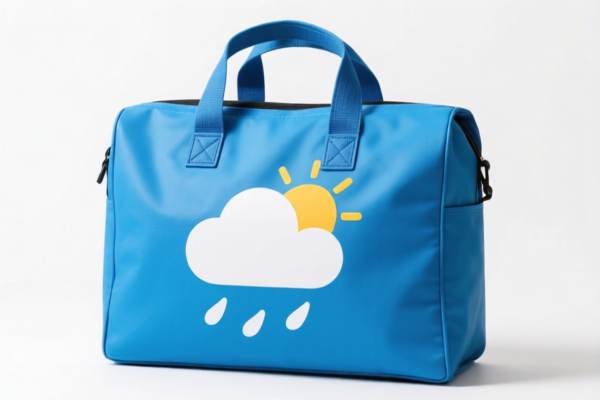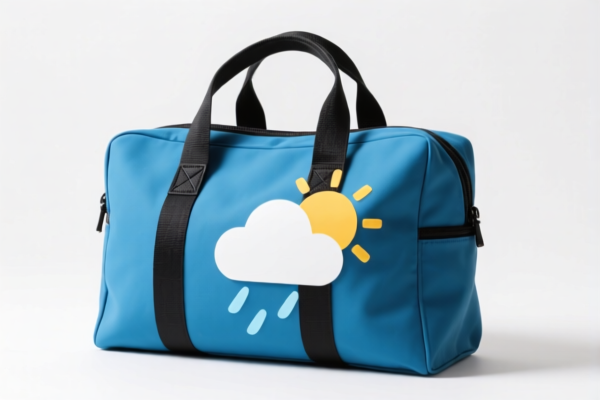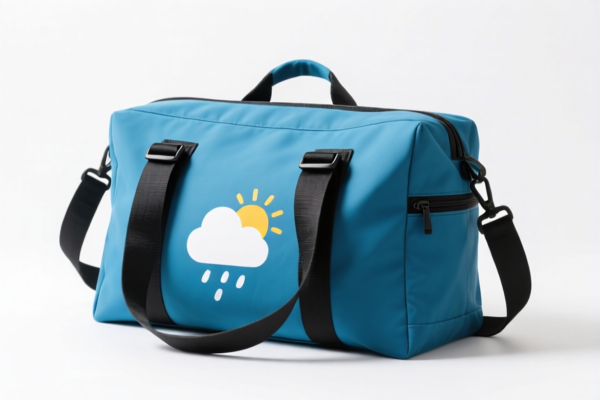| HS Code | Official Doc | Tariff Rate | Origin | Destination | Effective Date |
|---|---|---|---|---|---|
| 4202924500 | Doc | 75.0% | CN | US | 2025-05-12 |
| 4202929700 | Doc | 72.6% | CN | US | 2025-05-12 |
| 4205000500 | Doc | 57.9% | CN | US | 2025-05-12 |
| 4205000500 | Doc | 57.9% | CN | US | 2025-05-12 |
| 5609004000 | Doc | 58.9% | CN | US | 2025-05-12 |
| 5609001000 | Doc | 57.9% | CN | US | 2025-05-12 |
| 5404900000 | Doc | 55.0% | CN | US | 2025-05-12 |
| 3923210080 | Doc | 58.0% | CN | US | 2025-05-12 |
| 3923210095 | Doc | 58.0% | CN | US | 2025-05-12 |
| 3918905000 | Doc | 59.2% | CN | US | 2025-05-12 |
| 6114909070 | Doc | 35.6% | CN | US | 2025-05-12 |
| 6101909060 | Doc | 43.2% | CN | US | 2025-05-12 |
| 6101200010 | Doc | 53.4% | CN | US | 2025-05-12 |




Weather Bag
A weather bag, also known as a dry bag or waterproof bag, is a watertight container designed to protect contents from water, dust, and other environmental elements.
Material
Typically constructed from materials such as:
- PVC (Polyvinyl Chloride): A common, cost-effective option, offering good waterproofness.
- TPU (Thermoplastic Polyurethane): More durable and flexible than PVC, often preferred for higher-end bags.
- Nylon or Polyester with Waterproof Coating: Provides a lighter weight alternative, often with a polyurethane or silicone coating for water resistance.
- Hypalon: A synthetic rubber known for its exceptional durability and resistance to chemicals, UV, and abrasion; used in more specialized, robust bags.
Purpose
The primary purpose of a weather bag is to keep items dry and safe during activities where exposure to water is likely. This includes:
- Protecting electronics (phones, cameras, radios)
- Safeguarding clothing and personal items
- Keeping food and essential supplies dry
- Providing flotation for certain items (depending on the bag’s design)
Function
Weather bags achieve waterproofing through:
- Watertight Seal: Typically utilizes a roll-top closure system, where the bag is rolled down multiple times to create a secure seal.
- Welded or Heat-Sealed Seams: Construction often involves welding or heat-sealing seams to prevent water leakage.
- Air Valve (Some Models): Some bags include a one-way valve to allow air to be expelled during compression, aiding in flotation and reducing bulk.
Usage Scenarios
- Water Sports: Kayaking, canoeing, rafting, paddleboarding, sailing.
- Boating: Protecting gear on recreational or commercial vessels.
- Camping and Hiking: Keeping supplies dry in wet conditions.
- Fishing: Protecting electronics and tackle.
- Beach Trips: Safeguarding valuables from sand and water.
- Emergency Preparedness: Storing essential supplies in a waterproof container.
Common Types
- Roll-Top Dry Bags: The most common type, offering a reliable watertight seal. Available in various sizes and capacities.
- Compression Dry Bags: Designed to compress contents, reducing bulk. Often used for backpacking and travel.
- Deck Bags: Specifically designed for boats, often featuring D-rings for attachment and reinforced construction.
- Backpack Dry Bags: Integrated dry bag designs built into backpacks for complete weather protection.
- Waist Packs/Shoulder Bags: Smaller dry bags for carrying essential items during water activities.
- Phone/Electronics Cases: Small, dedicated dry bags designed to protect specific devices.
Based on the provided information, “weather bag” can be classified under several HS codes, depending on its material and specific function. Here's a breakdown of potential classifications:
- 3923210080: This HS code covers articles for the conveyance or packing of goods, of plastics; sacks and bags (including cones) of polymers of ethylene, with no single side exceeding 75 mm in length. If the “weather bag” is made of polyethylene plastic and its dimensions are within this limit, this code applies. The total tax rate is 58.0% (基础关税: 3.0%, 加征关税: 25.0%, 2025.4.2后加征关税: 30.0%).
- 3923210095: This HS code also covers articles for the conveyance or packing of goods, of plastics; sacks and bags (including cones) of polymers of ethylene, but without the size restriction. If the “weather bag” is made of polyethylene plastic and has a side exceeding 75 mm, this code is applicable. The total tax rate is 58.0% (基础关税: 3.0%, 加征关税: 25.0%, 2025.4.2后加征关税: 30.0%).
- 4202924500: If the “weather bag” is made of sheeting of plastics or textile materials and is categorized as a travel, sports, or similar bag, this HS code applies. The total tax rate is 75.0% (基础关税: 20.0%, 加征关税: 25.0%, 2025.4.2后加征关税: 30.0%).
- 4202929700: This HS code also covers bags made of sheeting of plastics or textile materials, but is a more general "Other" category within the travel, sports, and similar bag classification. The total tax rate is 72.6% (基础关税: 17.6%, 加征关税: 25.0%, 2025.4.2后加征关税: 30.0%).
HS Code Breakdown:
- Chapter 39: Plastics and articles thereof.
- Heading 3923: Articles for the conveyance or packing of goods, of plastics; stoppers, lids, caps and other closures, of plastics.
- Subheading 392321: Sacks and bags (including cones).
- Chapter 42: Articles of leather or of composition leather, or of textile materials, not elsewhere specified or included.
- Heading 4202: Trunks, suitcases, vanity cases, attache cases, briefcases, school satchels, spectacle cases, binocular cases, camera cases, musical instrument cases, gun cases, holsters and similar containers; traveling bags, insulated food or beverage bags, toiletry bags, knapsacks and backpacks, handbags, shopping bags, wallets, purses, map cases, cigarette cases, tobacco pouches, tool bags, sports bags, bottle cases, jewelry boxes, powder cases, cutlery cases and similar containers.
Important Note:
When declaring a “weather bag”, it is crucial to accurately identify the primary material used in its construction (plastic or textile materials) and its intended use (travel, sports, general packing) to ensure correct HS code classification.
Customer Reviews
No reviews yet.